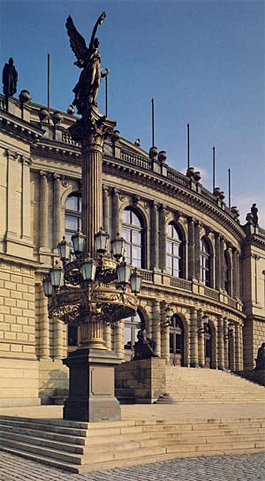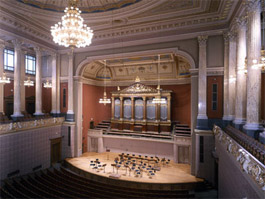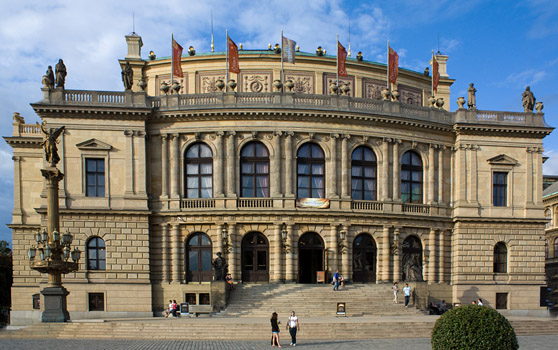
125 years ago, the building of the Rudolfinum opened to visitors.
 |
Prague's cultural life has long lacked a venue where Czech art could be presented. Therefore, the management of Česká spořitelna decided to provide such a building to Prague on the occasion of its fiftieth anniversary. The land for construction was chosen in the northern part of today’s Palach Square, known as Rejdiště. According to historians, the name of this area comes from a former riding school or relates to the "rejdy" of the poor who gathered here. From the fourteenth to the seventeenth century, there was reportedly a dump on the right bank of the Vltava River, followed by a timber transshipment point with a sawmill and several other objects that were demolished.
In the architectural competition for the House of Artists, which would serve as the headquarters for the art gallery of the Society of Patriotic Friends of Art, the Museum of Applied Arts, and the Conservatory of Music, the designs of Josef Zítek and Josef Schulz won. Professors from Prague Polytechnic infused the building with the same neoclassical character as previously seen in the National Theatre. In their work, they drew inspiration from the building of the Dresden Opera, which at that time had already been destroyed by fire and was designed by architect Gottfried Semper.
The Rudolfinum was divided into two distinct parts: the southern wing with Dvořák Hall and the northern section with several halls, centered around the monumental central atrium with a glass roof. There are over 80 rooms occupying a total area of 8,000 square meters.
The foundation stone of the Rudolfinum was laid on June 23, 1876. The construction, named after its patron, Crown Prince Rudolf, was completed five years later. Work on its artistic decoration continued until the end of 1884. The total cost of the construction reached two million golden crowns, four times more than initially anticipated.
 |
After the declaration of the Czechoslovak Republic, the National Assembly settled in the Rudolfinum, functioning here until April 1946, with the exception of the German occupation. Concerts in the Rudolfinum resumed on May 11, 1946, when conductor Rafael Kubelík opened the first edition of the Prague Spring music festival. Since then, the Rudolfinum has been the permanent home of the Czech Philharmonic and the center of the concert life of the metropolis.
Throughout its existence, the building has undergone numerous structural modifications; in 1989, it was even closed due to poor emergency and technical condition. Recently, the Rudolfinum underwent significant modifications during a comprehensive reconstruction designed by architect Karel Prager from 1990 to 1992. During this, this national cultural monument was restored to its original appearance and to its original concert and exhibition purposes. The reconstruction, lasting 23 months, cost 1.2 billion crowns.
Last year, the Rudolfinum was in the media spotlight due to disputes surrounding the planned dismissal of the director of the Rudolfinum Gallery, Petr Nedomy, by the newly appointed head of the Czech Philharmonic, Vladimír Darjanin. However, Nedomy received support from the professional public, and therefore, in October, the Ministry of Culture decided to transfer the gallery from the Czech Philharmonic's framework to the administration of the Museum of Applied Arts in Prague as of January 1 of this year.
 |
The English translation is powered by AI tool. Switch to Czech to view the original text source.
0 comments
add comment










